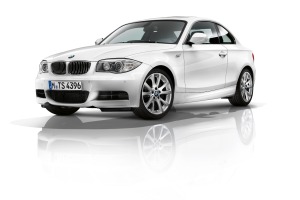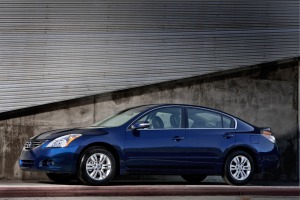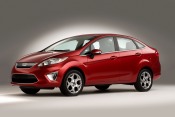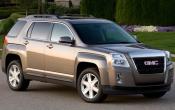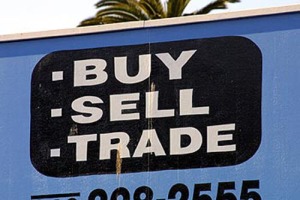
Consumers can learn how better to approach the trade-in process by considering the transaction from the dealership's point of view. With this in mind, we posed a number of commonly asked questions to three experts in the used car business. There was a difference of opinion among these industry insiders, but there was also a lot of valuable information that will certainly help car shoppers.
One of our experts is Bill Weismann, a dealer from Orlando, Fla., who buys 25 to 30 cars a week and as a result is an expert on vehicle trade-in values.
Another expert is Kenneth Mills, a car salesman with eight years of experience, who currently sells Hondas. He wrote to Edmunds.com concerned about some of the information we printed about trade-ins. We asked him to help readers by giving us the dealer's perspective on the trade-in process. He replied at length to a number of questions, and his edited responses are listed below.
Finally, we have tapped the expertise of an Edmunds.com data analyst who spent a number of years working as a used car manager for a national franchise.
What is the biggest misconception consumers have about trading in their cars?
Mills: The amount of money that dealers make on them. Most dealers shoot for a gross profit per unit of between $1,200 and $1,800. Also, many people believe that if a book says their car is worth a certain figure, that we automatically give it to them. If the book is right, of course, we do. Used car values are merely opinions.
Weismann: The shopper will search the Internet sites looking for trade-in values. Naturally, they will believe the highest number. Trouble is, in the real world, the trade is often worth much less to a dealer. Why would they pay $10,000 for a car that goes begging at the auctions for $7,500? That Neon or Hyundai will rot on the lot and the dealer knows it.
Edmunds: A lot of consumers don't understand that the amount their trade-in will bring is in relation to a number of things: what day of the month it is, the product mix on the lot, the inventory mix. If a dealer already has five white Camrys on the lot, and you want to trade in a white Camry, they won't give you much for your car. If they're light on that car, or they're one or two cars short of making a bonus, they might step up.
How do you evaluate a trade-in and assign a price to it?
Mills: The used car manager will generally drive the car a mile or so, look at the paint to see if it has had body damage, and use the Black Book as a guide [The Black Book is used more in the Southeastern states]. The real trick is to buy the car right, or you might be looking at a wholesale loss in 60 days. A good used car manager knows which cars will bring top dollar and which ones won't.
Weismann: Right away, I might know roughly what it's worth unless it's purple or something. I don't use the Black Book or Kelley, but I watch the Manheim [auction prices] like a hawk. I write down the VIN [vehicle identification number] and mileage. I automatically Carfax it [run a Carfax vehicle history report on the car]. I catch a lot of problems that way. Then I take a look at the body by doing a general walk-around. I look for paintwork. If it looks like the car's been hit, I pop the hood. I look at the fluid levels, then take a quick spin around the block. Next, I look at the interior, the headliner and check to see if it was a smoker's car. I also look at the tires, check the tranny.
Edmunds: A lot of it is curb appeal. But condition of the paint and mileage is so critical. If there's 100,000 miles on a domestic, it's different than that kind of mileage on a German highline.
Do you recommend that consumers trade in? Or should they sell on their own?
Weismann: It depends on what they've got. If you bought right in the first place, you might have something to trade in that will bring a good price.
Mills: Heck, yes. It is quick and doesn't cost you as much as you might think, especially if you drive the right kind of car. Also, many states (all the ones I have worked in) give you credit for your trade when figuring sales tax. For instance, let's say you are buying a $20,000 car, and have a $12,000 trade. The sales tax in my state is 6 percent on cars. You will pay taxes on $8,000 in most states, instead of $20,000, for a savings of $720.
When a dealer gives a customer a figure for a trade-in, is there some wiggle room there? Or is that a firm price?
Weismann: Usually not a lot of wiggle room. Some dealers might hit the guy low and work it from there. But I usually won't bump more than once.
Mills: If the purchase price on the new car has been negotiated, it is somewhat firm. If you are not getting enough, ask the dealer if it is his bid or from a wholesaler. If it is his, ask him to make some calls. This will often net a little more. If it is a wholesale bid, ask him to try to raise the wholesaler. Sometimes, he can. Also, if you are trading the same kind of car the dealer sells, and your car is very nice, you may be able to get more because they want it for the lot.
What can consumers do to make sure they get a fair price for their trade-ins?
Weismann: They need to be well aware of what they have. And what [the dealer] is looking for. What we're looking at is totally different than what they are looking at. If they have had paint work on a highline car, it slaughters [the trade-in value]. It's amazing how many consumers don't know how much difference that makes.
Mills: First, take your car, especially if it is old, to [someone who can tell you the wholesale value of the car — what the car would sell for at a dealers' auction]. Also, make sure that you are dealing apples to apples. What I mean is that a Ford dealer may say he is giving you more, when he is just discounting the car he is selling you. If you tell him your trade value is important, he will try to satisfy you there. On the other hand, if a Honda or Toyota dealer offers you less, that doesn't mean you are actually getting less for your car. Ask them what the "Actual Cash Value" is.
Edmunds: Use the research tools available to you on the Internet. Check Edmunds.com TMV®, but also look at the asking prices listed on AutoTrader.com. And keep in mind how important curb appeal is when trading in.
Is there anything else you think the consumer should know?
Mills: The hardest thing for customers is their emotional attachment to their cars. Everyone thinks his or her trade is the nicest one we have seen, which it may be. There is still a limit to how much the car is worth.
Also, the value of your car has nothing to do with the payoff [the amount still owed to the bank]. Many customers feel that we should give them their payoff for their cars. The two are unrelated. If you are upside-down [owe more than the car is worth] as they call it, don't worry. Most people who have a payoff are. If you can still make the new car affordable, do it. If not, you can use cash to get out, or keep the car a little longer.



